Around 1700 the former Anglican clergyman Samuel Crisp, desiring to belong to a religious group that might make known to him “the greater and deeper mysteries” of God’s kingdom and help him attain “a more excellent degree of holiness,” began to read Robert Barclay’s An Apology for the True Christian Divinity and other books written by Quakers. Intrigued by what he read, Crisp entered into conversation with George Whitehead, the most eminent survivor of the Quakers’ founding decade and a strong leader still among the Friends. Prior to his investigations, Crisp had thought of Quakers as “fools” and “madmen,” but now he discovered the kind of Christian faith that could wean him away from the Anglicans. In The History of the Rise, Increase, and Progress of the Christian People called Quakers, William Sewel wrote that Samuel Crisp:
liked their plainness, and the decency and simplicity of their conversation; they do not use the ceremonies and salutations of the church of England, but shake hands freely, and converse together as brothers and sisters, that are sprung of the same royal seed.
Thus, by 1700, it seems that this plain, decent, and simple religion, as Crisp described it, already had adopted handshaking as a central practice, accompanying fraternal (and sisterly) conversation.
In the earliest decades of Quakerism, much that was crucial to Quaker identity belonged to the realm of gestures and acts, rather than words. In particular, it was important that Quakers avoid the oppressive, hierarchical rites of the established church and the exaggerated courtesy expected from ordinary people toward those of high social standing. Quaker men were to avoid taking off their hats to honor those who claimed to be their social superiors. Quakers stood stiffly when greeting others, carefully avoiding the bowing and scraping that was customary among their contemporaries. What to avoid was covered in great detail in Quaker tracts from the seventeenth century. The gestures and acts that Quakers were to embrace were mentioned only very seldom. But historians of Quakerism see handshaking as a practice that was embraced by Friends very early in their history.
In The World’s Honour Detected, early Friend Benjamin Furly wrote that “the true honor, which comes from God alone, dwelling in the heart . . . leads, moves, guides, directs, and puts forth itself . . . by giving the hand, falling on the neck, embracing, kissing, and at all times, upon all occasions, doing good to all.” Furly recommended such virtuous, Spirit-led actions, so that Friends would scrupulously avoid “dirty customs of bowing the body, bidding Good-morrow and Good night, wagging the hat, and such like things, practiced in bare custom.”
While it is hard to know how extensively Quakers utilized the forms of greeting that Furly was inclined to see as being Spirit-led, it is safe to say that by the 1660s the handshake had become the standard way for Quakers to close their meetings for worship. John Walter, in “Body Politics in the English Revolution” says that among ordinary people who were neither royalty nor gentry in the mid-seventeenth century, the handshake was the preferred greeting, and it had been a common practice during the English Civil War in the Puritan armies, in which many men who were soon to become Quakers had served.
The extent to which Quakers had already adopted the handshake as their own religious custom became clear during the intra-Quaker controversy that began in 1661 with John Perrot. Perrot and his followers insisted that every action by every Quaker at all times should be in response to a leading from the Holy Spirit. George Fox and the Quakers who valued Fox’s leading always thought it necessary for male Friends in worship to remove their hats when a worshiper addressed God in prayer, and Perrot found this practice effectively to be optional. If any Quaker was not moved by the Spirit to doff his hat when another Friend was praying in worship, then it should be acceptable to keep one’s hat on one’s head. Perrot made the same contention about the practice of shaking hands at the conclusion of meeting that, according to Fox and others, connoted greeting Friends in the fellowship of Truth. That too should be optional or, more precisely, done only in response to an immediate leading from the Holy Spirit (Kenneth Carroll explored this “Early Quakers and ‘Going Naked as a Sign’”).
Fox opposed the change of practice on handshaking that Perrot favored, just as he opposed the proposal that Quaker men could keep their hats on their heads when other Quakers were praying in a meeting for worship that they were attending. Wrote Fox:
This earthly spirit [i.e., Perrot and his followers] judges all, that are gathered together in the power, and that are constrained by the power and love of God, in a familiar way, to take one another by the hand, through the dearness and nearness of the love of God, and the pure, clean, and holy life; and also are moved by the power of the Lord God to put off their hats in prayer.
Fox’s side of the argument prevailed among Friends, and thus there has been continuity in practice of the custom of shaking hands at the close of Quaker meetings for worship, from the seventeenth century up to 2020.
In North America, the Quaker readiness for promoting the handshake, as a means of greeting both persons belonging to one’s own religious communion and those positioned outside of it, resulted in the handshake gaining ground over more elaborate forms of greeting. On a continent-wide basis, the non-hierarchical handshake, practiced widely in Quaker Pennsylvania, eventually eclipsed the “ritual displays of social deference” brought over by Anglicans to Virginia. David Hackett Fischer wrote about this in 1989’s Albion’s Seed:
In place of bowing, curtseying, scraping, and uncovering, Quakers substituted the ritual of the universal handshake—a decency which Friends extended to everyone—even their social superiors.
The triumphant spread of the practice of the handshake was a transatlantic, even worldwide, one. In England, J. Rendel Harris, an eminent twentieth-century Quaker and historian of early Christianity, praised the practice of handshaking in terms that would not have occurred to his Quaker forebears a scant two centuries earlier in a collection of talks called The Sufferings and the Glory. Reflecting on the “kiss of peace” that third-century Christian martyrs had exchanged with each other prior to their deaths, Harris stated that his Quaker contemporaries were unlikely to share that practice. But he found acceptable substitutes in smiles and handshakes:
If we do not exactly have the kiss of Peace, every handshake of friends who find one another again after a long absence is sacramental. . . . Love flows out at their fingers. . . . Every smile, too, is a sacrament, expressive enough to those who understand.
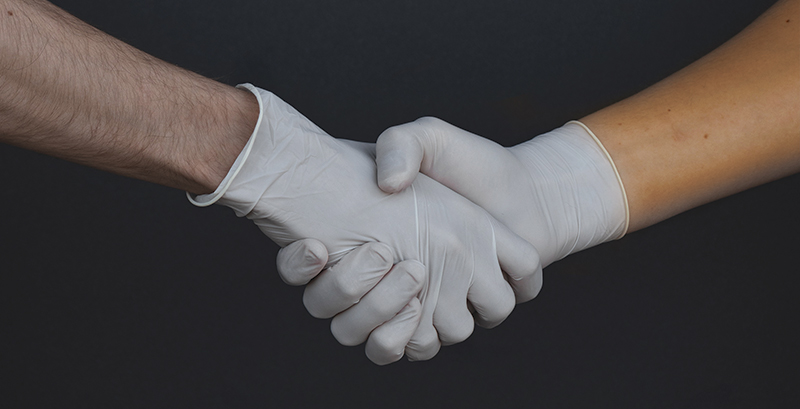
The Quaker Handshake in 2020 and Thereafter
By March 9, 2020, the coronavirus outbreak in the United States had become serious enough that one of the leading Quaker organizations, Friends General Conference (FGC), sent out a communication entitled “Prevention in your Quaker Community” to Quaker meetings throughout the United States. Written by Holly Baldwin, Vanessa Julye, and Marta Rusek, one paragraph directly addressed the practice (almost universal at the time) of closing Quaker meetings for worship with a handshake:
One possible way to increase safety is to temporarily alter Quaker greetings in a way that will help stop the spread of a public health epidemic while still communicating warmth and welcome. That means evolving our methods of greeting from handshakes and hugs to words and gestures of peace. While this may take some getting used to, it’s worth remembering that for all of us—especially for Friends undergoing treatments that weaken their immune systems—handshakes and hugs can lead to illness or worse. During this time, adapting your methods of greeting to promote safety can be considered an act of love.
Those Quaker meetings close to my neighborhood in Richmond, Indiana, did cease greeting one another with handshakes. Furthermore, by the end of March, all Quaker meetings in that same area had ceased meeting in their meetinghouses. Some were meeting virtually, using teleconferencing software. By the middle of May, some had resumed meeting, but all were still practicing social distancing, either by continued use of teleconferencing, or by spacing themselves out and wearing face masks in a physical space that was large enough for such social distancing.
But an important word in the FGC statement was that Friends had ceased the practice of handshaking “temporarily.” As of this writing, the pandemic continues, although the number of new cases is declining in many areas. No Quakers have yet resumed greeting each other with handshakes. But how temporary is this cessation to be? And even suggesting that the cessation is temporary raises the question: Should Quakers resume it in the future and, if so, under what circumstances?
Anthony Fauci, director of the National Institute of Allergy and Infectious Diseases, is not a Quaker, but he is someone to whom many Quakers and others look for guidance on such questions. It is Fauci’s considered opinion that persons should not resume the practice of handshaking after the pandemic is over. In April he told a Wall Street Journal podcast that “You don’t ever shake anybody’s hands.” The concern of Fauci and other physicians over the practice of handshaking has to do with the number and variety of microbes on one’s skin, and the ease of transferring these microbes by touching others’ hands or, for that matter, other infected surfaces. Hand washing or use of hand sanitizers can address such microbial pickups, if done so in a conscientious way, but it would be simpler not to pick up so many bacteria and viruses in the first place. So, even if the novel coronavirus is somehow tamed and conquered, it would be in the best interest of human beings not to efficiently transmit so many microbes one to another through touching each other’s hands, and that could mean an end to the handshake.
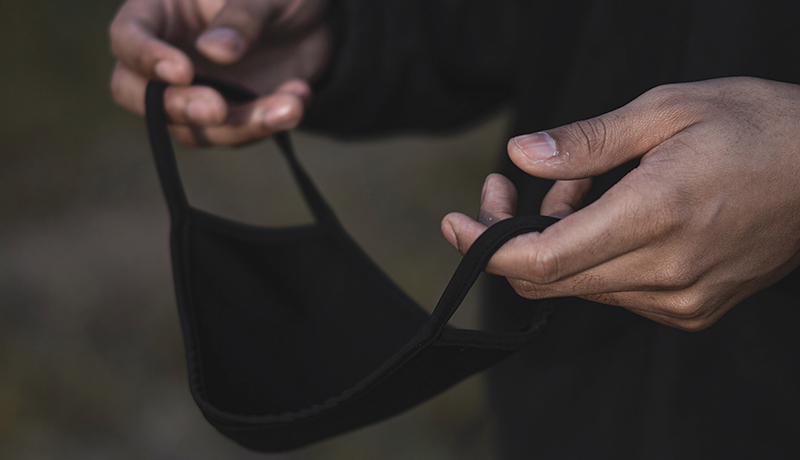
Over the long haul, should Quakers follow Fauci’s advice? If so, are there other methods of greeting that Quakers could adopt that would express the hearty, non-hierarchical, perhaps even sacramental communion of the handshake?
Quakers have long had deleterious encounters with invisible bacteria and viruses, long before science had demonstrated their existence and effects. Hundreds of Quakers died in English jails in the late-seventeenth century, and most of these deaths can be attributed to dreadful epidemic or endemic diseases in these unsanitary institutions. Subsequently, the very practical Quakers have always regarded science and medicine as highly appropriate disciplines for study and for educating their youth. Quaker practice has often been built on the high degree of intimacy, such as the kind sketched out by Benjamin Furly, but it has also been built on a high regard for truth, especially scientific truth. Truth has often brought us closer together and thus can favor intimacy. But in the age of the pandemic and social distancing, truth and intimacy seem to work largely at cross-purposes with each other, especially if intimacy is gauged by a practice previously seen largely as innocuous: the handshake.
It is possible that there are gestures at a distance that can embody the same sort of warm and hearty egalitarianism as the handshake. Some have suggested that the practice of pressing the palms of one’s own hands together, a gesture derived from Hinduism, and honoring the divine light in other persons whom one meets (the Hindi phrase is “Namaste”) would be just as appropriate and warm a greeting. Maybe so. But the egalitarian practice of pressing the flesh in a handshake will be hard for many Quakers to give up, especially if it is suggested that they do so on a permanent basis. Perhaps a resumption of handshaking, coupled with continued attention to careful hand washing, will supply a kind of greeting that will be regarded simultaneously as reasonably hygienic and suitably warm and welcoming or, in Harris’s terms, both Quakerly and sacramental. The sacramental smile could accompany either the Namaste greeting or the handshake.
It’s not too early for Quakers to think about what kind of world they want to see in the coming new reality, whether the novel coronavirus is eventually subdued with a vaccine, a cure, benign mutations, or all of the above, or, alternatively, becomes an endemic menace with which all humanity must reckon indefinitely. Whatever kind of world that may be, Quakers may still want to shake hands on it.
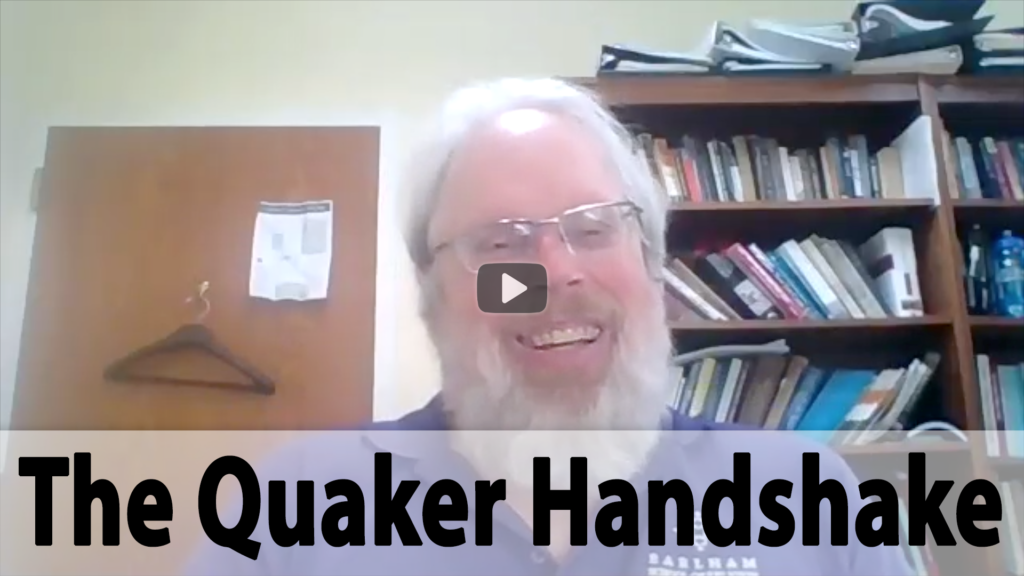
Sources
Carroll, Kenneth. “Early Quakers and ‘Going Naked as a Sign.’” Quaker history 67 (Autumn 1978): 69-87.
Fauci, “Dr. Anthony Fauci on How Life Returns to Normal.” The Journal podcast, April 7, 2020.
Fischer, David Hackett. Albion’s Seed: Four British Folkways in North America. New York, N.Y.: Oxford University Press, 1989.
Fox, George. The Works of George Fox. Vol. 7. Philadelphia, Pa.: Marcus Gould, 1831.
Furly, Benjamin. The World’s Honour Detected. London, England: Robert Wilson, 1663.
Harris, J. Rendel. The Sufferings and the Glory. London, England: Headley Brothers, 1915.
Sewel, William. The History of the Quakers. Burlington, N.J.: Isaac Collins, 1774 [1718].
Walter, John. “Body Politics in the English Revolution.” In S. Taylor and G. Tapsell, eds., The Nature of the English Revolution Revisited. Woodbridge, England: Boydell Press, 2013.


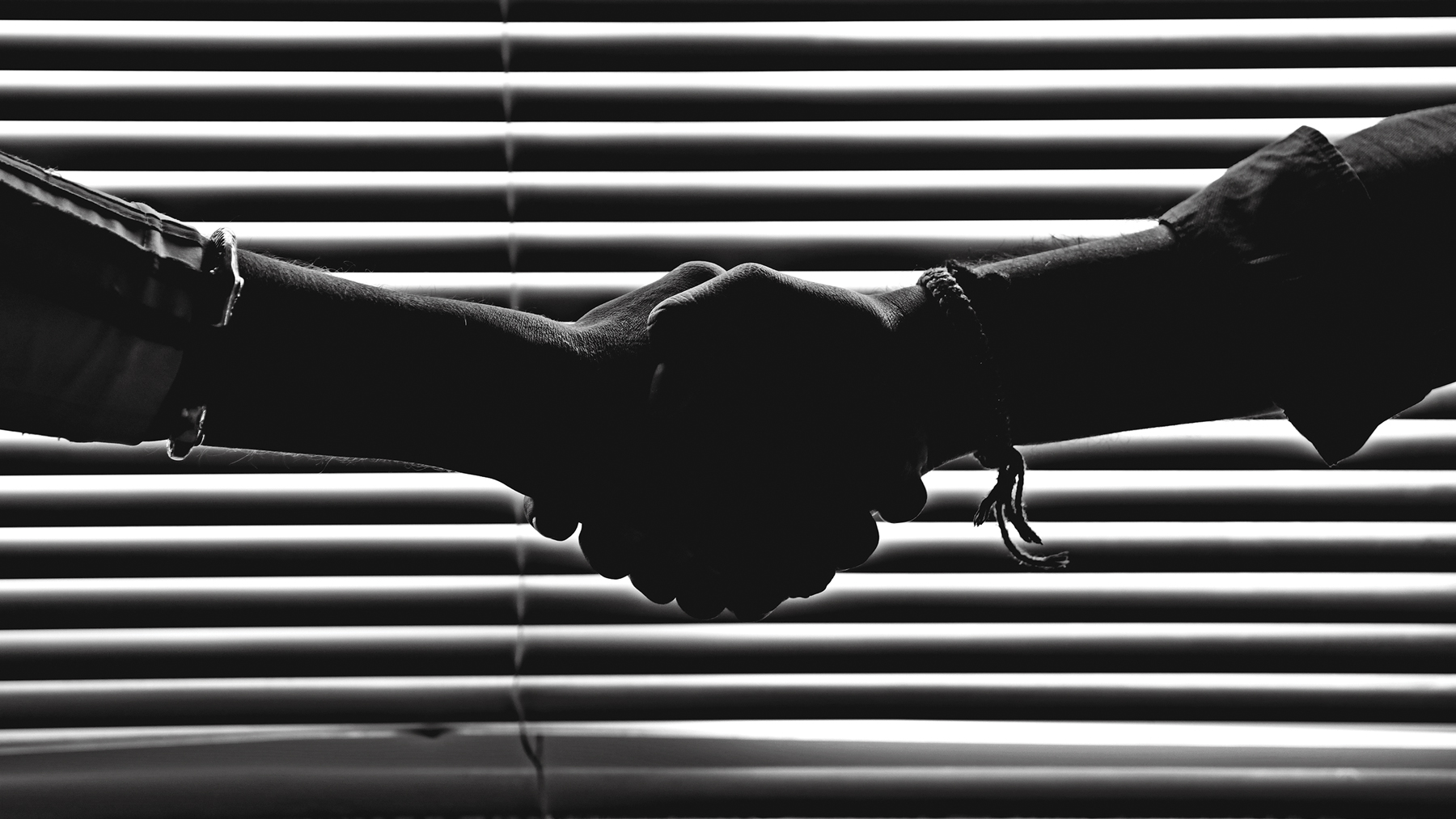
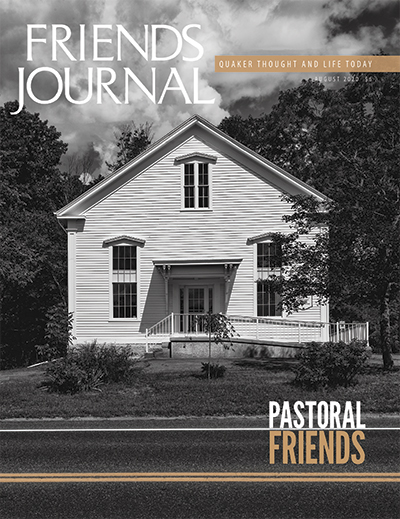
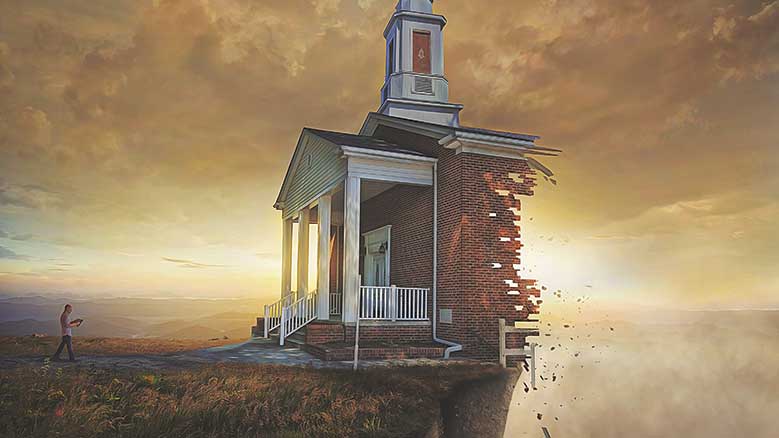
I have always accompanied the greeting handshake with a *good morning Friend.* It feels like that is wishing the other well, friendlier than *how are you?, and acknowledging the other personally rather than just rote handshaking. What were Quakers supposed to say INSTEAD of good morning or good afternoon?
The Biblical greeting is the holy kiss. The handshake is a somewhat anemic alternative.
If thee collapses in the street and I am there I will pick thee up and dust thee off.
If thee extends thy hand I will shake thy hand, this is an acknowledgement of my trust in thee. I am obedient to Devine guidance first.
In peace and light
Anna
Is there any acknowledgement lovlier than Namaste –recognizing that of God in another? It seems to me more spiritual than a handshake.
Another important way of greeting is to look the other directly in the eyes and nod the head.